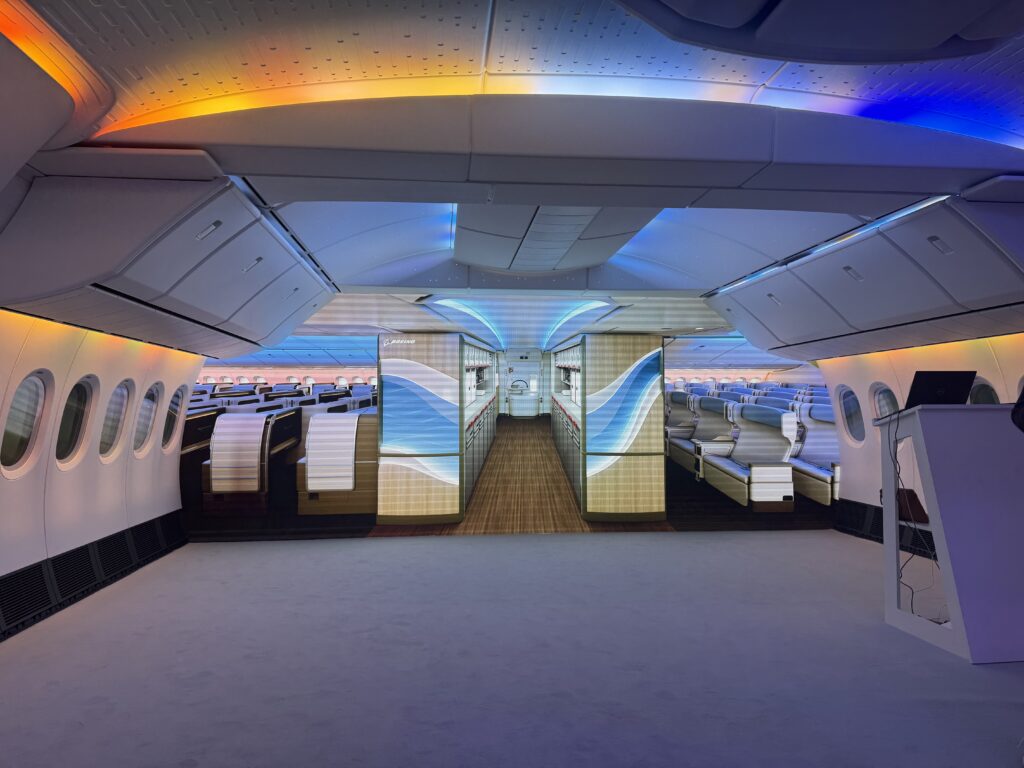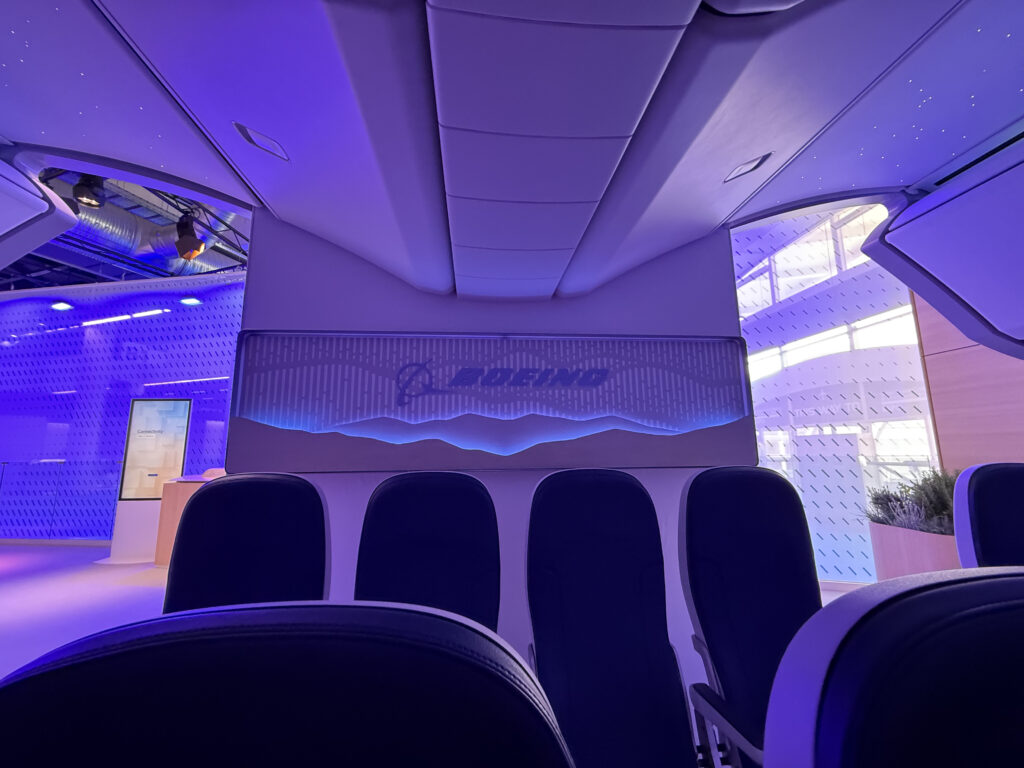HAMBURG — All too often, there’s a disconnect between the ideas that airframers have about how airlines will brand and personalise their cabins, and what actually takes place in reality. At this year’s Aircraft Interiors Expo, Boeing took the opportunity to explore some new options, raising interesting questions around what fixed and changeable cabin decoration and functionality might look like.
The airframer showed customisable ceiling panels over a notional doors 2 entryway in its 777X cabin mockup.
It also carried over the dots-and-dashes design to a rear-of-cabin bulkhead monument branding panel. This panel — a 3D affair featuring backlit mountains that cast cabin-synchronised LED light upwards on a raised logo panel with more mountains, in an evolution of the branding — looks smart. Indeed, it’s fascinating to see an airframer getting into this business so substantially, since in previous generations of aircraft a branding panel would very much be in the realms of something sourced out to a supplier.
Boeing was also dipping its toe into potential applications for electronic ink, showing a welcome zone with 3D wave effects where the deepest element was e-ink. This technology, as seen on e-readers and in e-ink displays in large stores, and indeed elsewhere at AIX on Diehl Aviation’s stand, is ultra-low-power and, once set, will stay as it is until receiving a signal to change what it’s displaying. However, it also allows for intermittent changes, which in the cabin example might be useful, non-safety-critical information that could change throughout the flight.
Information displayed in this way could include seat-finding directions on boarding, connection information before top of descent, advertising, shopping, displaying QR codes for passengers to scan for more information — anything that’s currently possible with a placard, and much more besides.

Boeing’s e-ink entryway monument was on display on the big screen, underneath a physical mockup of what the new ceiling panel option might look like. Image: Fintan Horan-Stear
Boeing regional director for cabin marketing Brenna Wynhof explains, “as we start to see electronic ink move further on the ground — obviously, it moves faster on the ground than what we’re going to put in the airplane — I really do believe that branding opportunities are going to find a new home with technology like electronic ink. Some of the feedback that we’ve gotten with branding panels [is that] they’re beautiful, everybody loves them, and they are a statement piece — but they are a hazard for getting chipped, getting damaged, maintenance is a real challenge.”
This tracks with the visual experience of many branding panels on board the aircraft — and, in fairness, other raised aesthetic elements like branding features on seats — after even the briefest time in service.
The problem with the physical panels, she continues wryly, gesturing to the mountainous branding panel in the mockup, is that “everybody just loves to touch them, I don’t know why. They draw you in: the number of people that have come over to these mountains and just started running their fingers and looking behind, it’s just magnetism. So with electronic ink, I think there’s going to be some real opportunities to work in tandem with the existing type of structure that we have in branding panels.”
With newer generations of e-ink technology becoming higher and higher resolution, what might look like a simple thermoplastic bulkhead, sidewall or monument can become an incredibly powerful way to communicate information to passengers. It inherently also helps with aircraft transition and wet-leasing, reducing the need to change physical branding between operators — benefiting cabin aesthetics, branding, marketing and even operational demands.
Related Articles:
- Boeing Perch welcome space asks big questions about big OLED screens
- Air New Zealand’s Christmas cabin highlights power of projection
- Boeing 777X cabin mockup takes centre stage at Farnborough
- ABC International delivers cabin branding to ITA Airways
- Press Release: Diehl Aviation’s eDecor: a game-changer in customization
Featured image credited to John Walton













